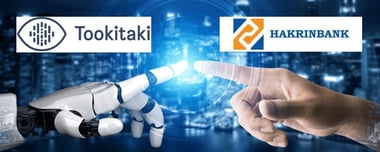Too often, decisions concerning Regulation Technology (Regtech) adoption were heavily influenced by vague or inaccurate perceptions. Many believe that RegTech solutions are too expensive and resource-intensive and are often over-engineered for the needs. When it comes to the use of artificial intelligence (AI), many say these applications are too much of a ‘black box’. For some, the focus on technology and the perceived effort required to make sense of Regtech seemingly ended the conversation before it ever had a chance to begin.
Presented in a recent report published by the Hong Kong Monetary Authority (HKMA), the above are some observations from representatives of institutions that have yet to adopt RegTech. Published in collaboration with Deloitte, the report provides examples of RegTech adopters, addressing many concerns about the use of modern-era technologies for regulatory compliance. In particular, the report provides key insights and practices from the early adopters of RegTech to enhance the efficiency and effectiveness of their Anti-money Laundering and Counter-Financing of Terrorism (AML/CFT) efforts. The responses were gathered particularly from money laundering reporting officers (MLROs) and other AML/CFT practitioners, who did not have a deep background in data or technology.
Encouraging Signs
The report noted that there are encouraging signs of RegTech adoption amid unprecedented challenges faced by the banking industry in 2020. It says RegTech “has played a key part in helping to keep vital banking services available in rapidly changing circumstances”, in particular the tough operating conditions in the wake of the COVID-19 pandemic. About 90% of retail banks surveyed have either launched or plan to launch remote on-boarding for individuals using Regtech solutions.
Further, 80% of Accelerator banks — those at an early stage of the adoption cycle — are now using or planning to use AML/CFT Regtech solutions, while 77% of Enabler banks — which had explored implementing machine learning in transaction monitoring and screening — are now either using it, conducting proofs of concept (POC), or have concrete plans to do so.
Practical Guidelines
Sensing that “there is still more to be done”, HKMA also shared comprehensive hands-on experience and insights from respondents to better understand the factors and dependencies affecting AML/CFT Regtech adoption. The regulator collaborated with 10 mature RegTech adopters to build out a common set of fundamental requirements around data, analytics, information delivery, collaboration, and skills and expertise.
The guidelines are grouped under five themes:
1. How to get started: You are beginning a marathon, not a sprint
For professionals without a data or technology background, the question of how to get started with RegTech can be troubling. There are many tasks such as defining the business case, understanding the data and technology requirements, securing investment and management buy-in, running change programmes, dealing with multiple teams and stakeholders, competing pressures of business-as-usual and liaising with regulators. Early adopters of RegTech have the following insights to offer:
- Secure management buy-in early and throughout to build credibility
- Build cross-functional, interdisciplinary teams
- Accelerate the adoption process by learning from the experiences from others both within and outside your organisation
2. Data and process readiness: Anticipation is key to success
The traditional standards of data quality, data analytics, process documentation and metadata may not be suitable for new-age technologies such as AI and machine learning. In many cases, raw data must be transformed so that machine learning algorithms can uncover insights from them or make predictions. With respect to data readiness, early adopters have the following insights:
- Anticipate situations that could throw problems in the way to AI implementation in order to avoid unnecessary costs and project delays.
- There should be a sufficiently detailed understanding or documentation of the processes being revamped.
- Invest sufficient time and effort up front to create data around processes targeted for automation.
- For efficient use of network analytics, there must be “the high-level identification of systems that contain the data required to run the requisite scenarios, data quality checks, cleansing, formatting and remediation as required.” A standardised practice of cleansing and formatting data during their initial deployment of network analytics would help reduce the time required to get future deployments up and running.
- “Building a clear communication and execution plan around obtaining necessary external and internal approvals (including system owners) for moving data to a single location from different jurisdictions” and various upstream systems is critical to the success of a RegTech project, especially those involving network analytics.
3. People, Talent and Culture: Strong communicators are as valuable as those with critical technical abilities
The main people-related challenge in RegTech adoption is identifying the skills required and those who can lead a culture of innovation. In the survey, around 20% of non-adopters found talent constraints as one of the reasons for shying away from AML/CFT Regtech. According to early adopters, a problem-oriented approach that encourages out of the box thinking, effective partnerships between people with different skill sets, communication and project management skills and a trial and error mindset are vital for AML/CFT teams exploring the application of new-age RegTech solutions.
4. Performance Metrics & Indicators: Try to capture the less tangible but equally valuable learnings
The way how institutions define and track value and performance for their investments into AML/CFT Regtech is also a key consideration. Building a consensus among various stakeholders around the value and success of an AML/CFT Regtech project can be difficult, as each stakeholder has varying levels of awareness, vision and priorities. Aligning stakeholder expectations early on is critical to the success of a RegTech project, say early adopters. According to them, looking beyond financial, operational and risk indicators is often important.
5. Third-party vendor relationships: Ensure compatibility, scale and sustainability
When it comes to the involvement of AML/CFT RegTech partners, who show promise but are new entrants, assessing their potential is a big challenge. Many third-party solutions today involve one or more technologies that banks find difficult to properly evaluate with in-house expertise. AI, in particular, has the “black box” problem. The risks and advantages of partnering with well-established, multinational conglomerates offering all-encompassing platforms are different from working with an AML/CFT Regtech start-up who claims to solve specific issues. So, banks are now revisiting the way they screen and evaluate technology third-parties. Some of the early adopters shared six questions that helped them gain comfort with newer third-party Regtech vendors.
- Does the vendor understand the bank’s needs or does the vendor’s solution meet the internally defined requirements of the bank?
- How well does the vendor understand the products, processes and regulatory requirements of the bank?
- How compatible is the solution with the bank’s existing systems?
- Is the vendor able to meet the bank’s scale requirements?
- How mature are the vendors and solutions on offer?
- What is the financial state of the vendor?
Our Stature as a AML/CFT RegTech Provider
Globally recognised for its innovation, Tookitaki offers the Anti-Money Laundering Suite (AMLS), an end-to-end AI-powered anti-AML/CFT solution that ensures operational efficiency, holistic risk coverage and better returns for the banking and financial services (BFS) industry. The solution is validated by leading global advisory firms and banks across Asia Pacific, Europe and North America.
We offer AMLS as a modular or end-to-end platform across the three pillars of AML activity:
- Transaction monitoring,
- Name and Transaction screening
- Customer risk monitoring
In order to power AMLS with comprehensive financial crime detection capabilities, Tookitaki has also developed the Typology Repository Management (TRM). TRM brings together information on the latest techniques criminals and terrorists employ to launder money and then provides the insights to address them. It draws on intelligence we gather from AML experts, regulators, financial institutions and industry partners from across the globe. As soon as a new money laundering typology is identified, our technology shares it across the user base to promote crime prevention.
Having rich experience in banking processes and the regulatory compliance landscape, Tookitaki developed both AMLS and TRM are developed keeping in mind the requirements of the industry. Our solutions can co-exist with legacy systems and are adaptable to various enterprise architectures and up-stream systems. Built with distributed data-parallel architecture, our solutions are horizontally scalable to move hand-in-hand with ever-growing datasets. Recently, our AMLS solution went live within the premises of United Overseas Bank (UOB), one of the top 3 banks in Singapore, making us the first company in the APAC region to deploy a complete AI-powered AML solution in production concurrently to transaction monitoring and name screening. The solution underwent multiple rounds of testing, involving third-party validators before it was used in a production environment.
As regulators such as HKMA promote RegTech adoption in AML/CFT, Tookitaki’s solutions meet all screening criteria related to compatibility, scalability and sustainability.
For a demo of our award-winning solution, please get in touch with us.
Anti-Financial Crime Compliance with Tookitaki?




